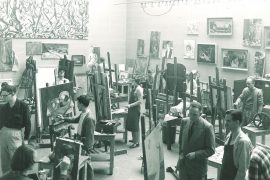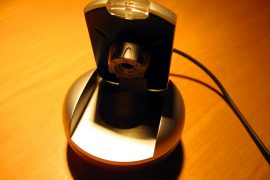One of the key goals of the University Strategic Plan for 2016-2020 is to deliver a unique learning experience. Assessment, although may not be the most popular topic among either students or teachers due to negative connotations linked to high-stakes summative testing, plays an important role in steering the learning process. If we are aiming to transform our learning experience, this discussion should start from the widely accepted model of constructive alignment, a coherence between learning objectives, activities and assessments in an educational program. And yet there seems to be a gap between innovative methodologies and a tendency to predominantly evaluate through traditional essay written assessment. How can we rethink assessment so that it fits into our current vision of education?
In my experience in assessment planning for language and culture, I have found it useful to reflect on some of the characteristics of assessment by breaking it down into the areas of purpose, structure and content.
Purpose
According to its purposes, three types of assessment can be considered. What kind of assessments are we using?
- Assessment of learning: a type of summative assessment that aims to reflect students’ knowledge of a given area through a grade. For example, a final test at the end of the semester constitutes assessment of learning, as it measures how much have the students learnt through the course.
- Assessment for learning: a type of formative assessment that aims to provide teachers with the necessary data to adjust the learning process while it is happening. Thus, the information collected through worksheets, class observations and ungraded quizzes allows teachers to understand student progression and regulate teaching plans accordingly.
- Assessment as learning: a type of formative assessment that aims for students to take an active role in their learning process by monitoring their progress and using feedback to make adjustments. When giving feedback on written tasks, using a code that indicates the kind of mistake instead of providing the correct answer allows students for self-reflection on their learning process; for instance, if a task is repeatedly marked with the tag “spelling” the student will be able to reconsider the correct spelling of each word but also to pay more attention to this aspect in future assignments.
Research shows that all three purposes should be combined in an assessment plan, but I would like to highlight the relevance of assessment as learning for empowering students as independent learners who have a protagonist role in knowledge production. To this end, recursive feedforward with a focus on self-regulated learning, through tools such as correction codes or rubrics with descriptors, can be used to place emphasis on each student’s possibilities rather than their limitations. For some guidelines on how to create interactive rubrics, Speedgrader rubrics, SmartRubric and Goobric offer a platform to provide personalised feedback while allowing for students to take ownership of their progress as well as pointing areas of improvement.
Structure
If we think of the way knowledge is produced, we can see that this happens in a social manner through access to a variety of sources. Assessment plans should contribute to making the ecology of learning increasingly more social by promoting creative, collaborative and publishing tasks in a context of collaborative intelligence where knowledge is simultaneously consumed and produced by students.
Connecting assessments contributes to focusing on the process rather than the outcome…
At the structural level, this means considering whether our assessment plan has been designed as a vertical teacher-student process or as a transversal collaborative process where learners are involved through peer-to-peer assessment as well as self-assessment. It is also important to revise the relation among the different assignments in an assessment plan: are these unrelated to each other or are they interconnected? Connecting assessments contributes to focusing on the process rather than the outcome and allows for an additional reflection on performance in a given task. For instance if a written and oral task are interconnected, a student could write a brief research plan on the depiction of the Spanish civil war in graphic novels and, thanks to the feedback received for this task, have an opportunity to improve the research conducted here in a second step consisting of an oral presentation.
Content
Keeping in mind that assessments should be aligned with learning objectives, it is worth considering the role of the Graduate Qualities during assessment design. To what extent are these values included in our assessments?
While higher education assessments usually focus on the depth of disciplinary expertise, the representation of some of the other qualities often stays minor or non-existent. For instance, communication skills in the target language often stand at the core of language and culture assessment, leaving very little space for critical thinking and problem-solving skills. According to constructive alignment, assessments should reflect both these graduate qualities or common learning objectives and the teaching practice. Following this principle, in language and culture assessment, communicative competence should be tested in a contextualized manner, encompassing qualities like critical thinking, cultural competence and interdisciplinary effectiveness. Through analytical tasks students can apply their critical thinking skills and creatively incorporate more than one discipline in their answer. For example, in a musicology task, students may be asked to analyse the role of language, history and social presentation in the emergence of Afro-Peruvian music, allowing for a development of critical thinking skills, cultural competence and interdisciplinary effectiveness.
By paying attention to the ways in which knowledge is constructed through multimodal meaning, assessment can also benefit from including suitable media for each assignment. For instance, in SPAN3002, I introduced an audio clip, political cartoons and a set of questions as stimuli for an assignment and, in turn, SPAN3001 students used a variety of media to describe themselves through a collage text.
Rethinking assessment in higher education aligns with the University Strategic Plan to transform the curriculum in collaboration with students and, after all, connects back to the Latin etymology of the verb “assess” (assidere), meaning sitting with students.





